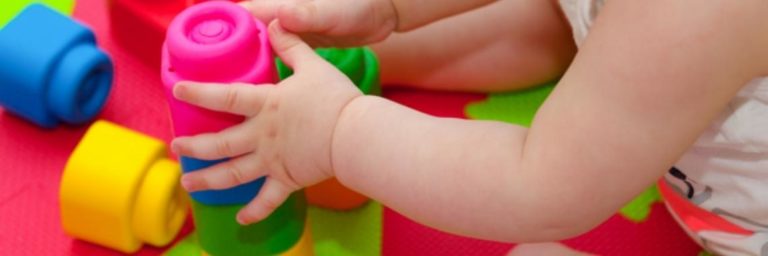Dr. Amanda Gummer is a child psychologist with over 20 years’ experience working with children and families. Committed to making the world more playful, and widely considered a go-to expert on play, toys, and child development, she is the founder of The Good Play Guide. The independent review site offers expert advice and reviews on a wide range of children’s toys, apps and other products to support parents in giving their children a healthy balanced play diet.
For retailers, understanding your customers’ needs is key to selling great toys, and in this exclusive guide, Amanda shares her top tips for choosing the best toys for babies and children for your store this Christmas.
Understanding your customer’s needs is key to selling great toys. By upskilling your team and helping them understand:
- What babies are able to do at each age
- What might be tricky for them to do
- What’s likely to capture their attention
- What will benefit their development
- What a parent might value in a product
– you can find great toys for your shop and keep those valued customers beyond the newborn phase. So here is a quick guide to understanding babies under 12 months.
Birth to six months
Playing with babies contributes to building the foundations for their physical, social and emotional, and cognitive skills, but until babies develop sufficient muscle control, they will not be able to initiate play, so it’s important that the toys appeal to the parents and other adults.
Babies at this stage have very loose muscles, but they will develop rapidly. We recommend using objects that have high contrast patterns, mirrors, movement, and sounds to encourage babies to move their heads. This helps strengthen their neck muscles and promotes attention skills.
‘Tummy time’ is another important way to support core muscle development. This is recommended by experts as a way to vary the position a baby is in, to avoid the back of their head from becoming flat. It also strengthens the muscles needed to start rolling over and crawling. Babies aren’t always a huge fan of tummy time, but toys can offer a distraction. Comfortable playmats with eye-catching patterns can help hold a baby’s attention for a little while, so they’re not just facing the floor! Children usually start teething from around 4 months and so everything will go in baby’s mouth. In this time of heightened germ-awareness, toys that are easy to clean (possibly can go into the dishwasher) will be popular with parents.
Additionally, toys that play music will be popular with consumers as they facilitate language development. These toys can support listening skills and help the baby to relax.
Six to twelve months
From six months onwards babies will start reaching for objects and exploring their surroundings with their hands and mouths, as both mobility and curiosity increase. Toys that are brightly coloured and sound-making can provide them with a safe, enjoyable play experience.
Once they can sit up, babies will be able to use their hands to play with their toys a lot more easily. Balls and wheeled toys can then be used to encourage crawling, helping to strengthen their gross motor skills (the big arm and leg muscles).
They may be starting to experiment with cause and effect, such as knocking over a tower of blocks just to observe what will happen. Therefore, toys that contain buttons to press or things to pull are great materials for this age group. However, keep in mind that their fine motor control (the small hand and finger muscles) are not yet refined, so buttons will need to be big, chunky, and easy to push with the whole hand.
Key consumer issues
Sustainability is a growing consideration for many parents in product choices and whilst the eco-credentials of a product will be balanced against price and ease of use/cleaning, ensuring that you have some sustainable products in your offering will ensure you don’t lose valuable, conscientious customers who are often prepared to spend a little more than your average consumer.
Summary
Babies develop rapidly and at different rates, so parents appreciate products that will grow with their child, to give them the greatest value for money possible. For example, a set of musical instruments could include toys that can be shaken and bashed with the hands, as well as instruments such as a drum or xylophone that can be hit with a stick when the baby has improved their fine motor skills.
Consider the sustainability, easy of cleaning and developmental benefits when choosing toys for your store and try and have a wide range of play types to meet the increasing variety of consumer needs and promote holistic development for the babies.
There are lots more good toys for babies on www.goodbabyguide.com along with information that you can share with your customers and use to upskill your team so they can provide top class customer service and build your loyal customer base.

Share your story
Want to share your news story through Nursery Online? Drop us a line using our news form or send us an email.

